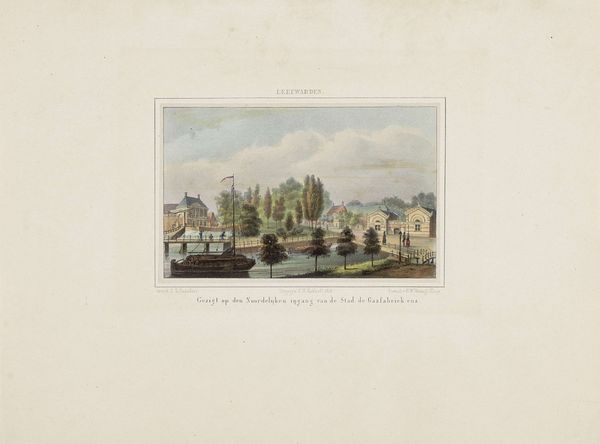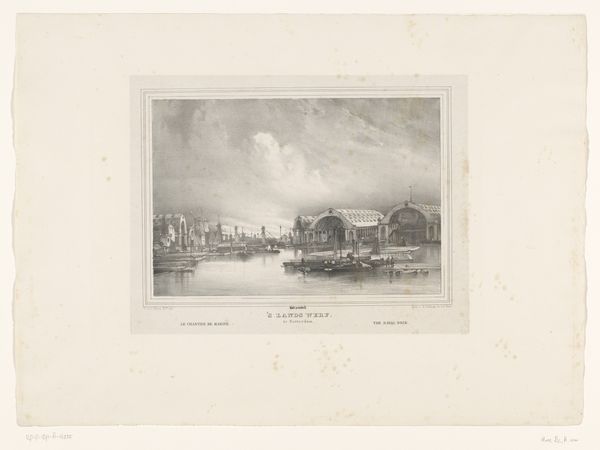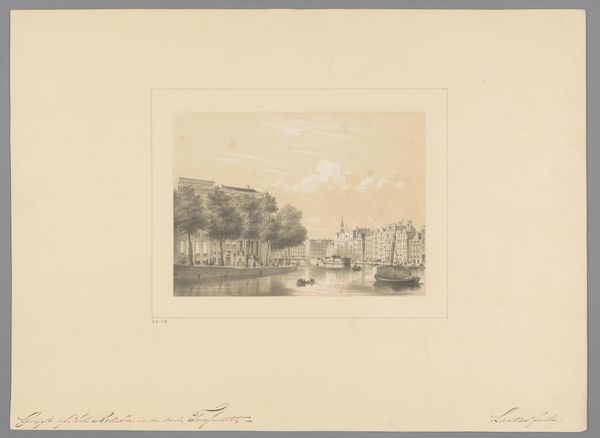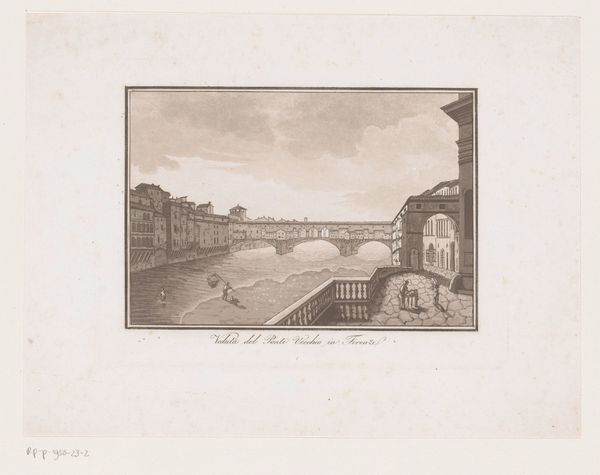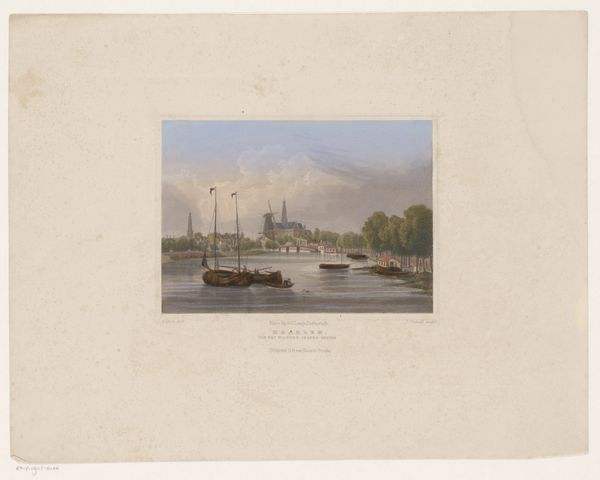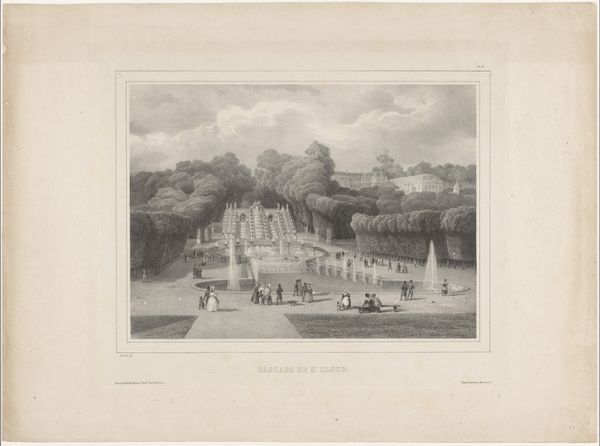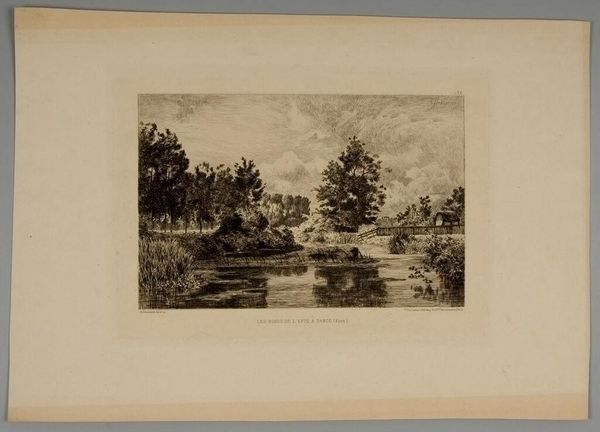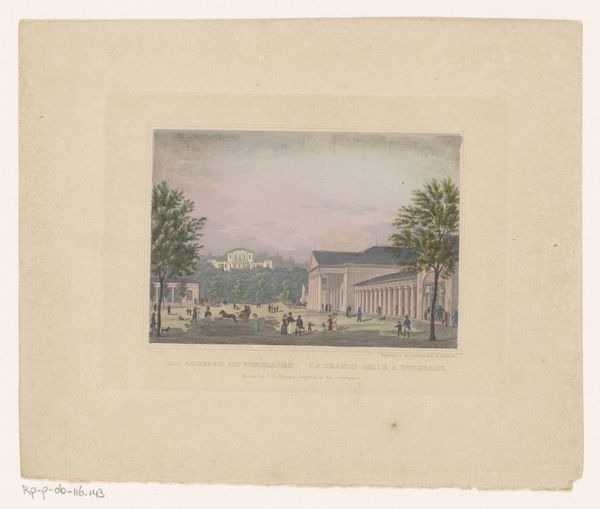
#
photo of handprinted image
#
aged paper
#
toned paper
#
light pencil work
#
photo restoration
#
ink paper printed
#
light coloured
#
white palette
#
watercolour illustration
#
watercolor
Dimensions: height 180 mm, width 246 mm
Copyright: Rijks Museum: Open Domain
Curator: This is titled "Gezicht op de Vijverberg in Den Haag," a watercolour from 1858 by G. Hess. What strikes you first about this piece? Editor: It feels very tranquil, almost dreamlike. The muted colours, the stillness of the water, the elegant swans... It's incredibly soothing. Curator: I think that peace resonates from the artist's deliberate focus on Haagsche society. By 1858, Western society was quickly being overturned with the advancement of technological innovation, political movements, abolitionist and women's movements; but paintings like this show the old guard maintained powerful visions of the world as unchanged and fundamentally ordered and harmonious. Editor: Absolutely. The swans especially evoke themes of purity and grace that you often see intertwined with ideas of old European societal structures. Think of the fairytale imagery, the constant symbolic returning to "noble" animals as mirroring humankind's worth, their grace. Curator: Consider, too, how swans have often been used to symbolize transformation and beauty emerging from difficult circumstances, a powerful social symbol when reflecting on Dutch social order, where entrenched norms prevailed over a rapidly changing world. Editor: I find it so interesting how the formal architecture, with its implications of authority and order, sits juxtaposed against the natural, flowing elements, which perhaps signifies the relationship between these powers within society. Curator: A delicate balance is on display in that compositional choice. How Hess positions this iconic societal imagery within an illustration intended for mass print, making accessible an idyllic portrayal of life that most of the Dutch could never obtain, points to the tensions inherent in the colonial imagination, where art both perpetuates and obfuscates inequality. Editor: This reminds us how representations like these are rarely neutral; they actively participate in shaping cultural narratives. It speaks to both social yearnings and lived experiences. Curator: The artwork leaves me thinking about the complicated role of images in shaping collective desires and perceptions of social identity in society, even today. Editor: For me, the work serves as a tranquil reflection on what could have been, or maybe still could. A very captivating, if simplified, piece that asks questions about social power and order.
Comments
No comments
Be the first to comment and join the conversation on the ultimate creative platform.


